Realizing Children’s Rights in Ecuador
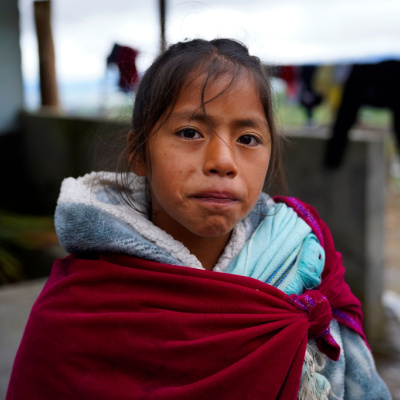
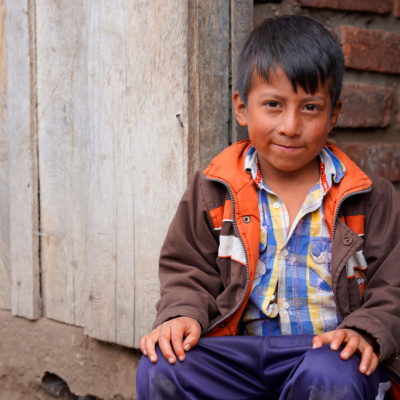
The government of Ecuador has demonstrated a firm commitment to protecting the rights of children through the ratification of international treaties and the implementation of domestic policies. The country maintains an exceptionally high school completion rate and routinely adopts new strategies designed to upscale child protection. However, despite these efforts, violence against children, child labour and poor local health standards continue to undermine the country’s progress. This means that children will inevitably struggle to live within the full scope of their fundamental rights.

Children’s Rights Index: 7,51 / 10
Orange level: Noticeable problems
Population: 18.1 million
Pop. ages 0-14: 27.4%
Life expectancy: 77 years
Under-5 mortality rate: 13 ‰
Ecuador at a glance
The Republic of Ecuador (República del Ecuador in Spanish or Chawpipacha Ripuwlika in Quechua), Quito being its capital, is a country in northwestern South America situated on the equator, from which its name derives. It shares borders with Colombia to the north, Peru to the east and south and the Pacific Ocean to the west. It also includes the Pacific archipelago of the Galapagos Islands (Archipiélago de Colón).
Geographically, the Ecuadoran mainland is divided into three main physical regions comprising La Amazoniá or El Oriente (eastern region), La Costa (coastal region), and La Sierra (highland region) (Vélez, 2021). A part of the Andean Mountain range passes through Ecuador within the la Sierra highland province. Within the country, there are nine national parks, including the Galápagos Islands. The eighteen islands are home to a diverse range of plants, birds and reptiles. Ecuador has one of the most unique biodiversity in the world, as noticed by Charles Darwin, comprising 25,000 plant species and 1,600 bird species (National Geographic).
Historically, in the 15th century, Ecuador was a part of the Incan Empire until Spanish colonization. For three hundred years, until 1822 Ecuador remained a Spanish colony. In 1822, Ecuador became a part of the independent Gran Colombia which consisted of Colombia, Panama and Venezuela (BBC, 2021).
Status of children’s rights [1]

Ecuador has committed to several international instruments for the protection of children’s rights. In 1990, the government ratified the Convention on the Rights of the Child (CRC). Ecuador is a member of the Organization of American States (OAS) and is bound to the Inter-American System of Human Rights. In 1995, Ecuador ratified the Inter-American Convention on the Prevention, Punishment, and Eradication of Violence against Women (also known as the Belém do Pará Convention. In 2013, as a member of the United Nations Economic Commission for Latin America and the Caribbean (ECLAC), Ecuador adopted the Montevideo Consensus on Population and Development.
The Optional Protocol to the Convention on the Rights of the Child on the involvement of children in armed conflict and the Optional Protocol to the Convention on the Rights of the Child on the sale of children, child prostitution and child pornography were both ratified in 2004. Ecuador is also a signatory to other international human rights instruments. In 1981 the government ratified the Convention on the Elimination of All Forms of Discrimination against Women and the International Covenant on Economic, Social and Cultural Rights in 1969.
Addressing the needs of children
Right to education
Despite education in Ecuador being free, children face several barriers to accessing education such as the inability to afford school uniforms and textbooks, a lack of physical accessibility to school buildings and teachers, inadequate educational infrastructure as well as unreliable public transport systems. The lack of schools across rural and Indigenous areas means that children must travel long distances to attend. Therefore, children living in rural and Indigenous neighbourhoods are less likely to attend school (US Department of Labour, 2020).
Between 2013 and 2020, the out-of-school rate, meaning the percentage of children of school-going age who were not enrolled in full-time education, for lower secondary education was 6% for boys and 3% for girls; and in upper secondary, it was 20% for boys and 18% for girls. Between 2010 and 2019, the schooling completion rate was 98% (UNICEF, 2021).
Since the COVID-19 pandemic, the situation has worsened and has affected 4.6 million Ecuadorian children. The shift to online distance learning led to many school dropouts as numerous children did not have access to the Internet, mobiles, laptops or other electronic devices. In the 2020/2021 academic year, there were approximately 100,000 children that did not register for school due to the lack of access to digital devices (US Department of Labour, 2020).
Approximately 65% of school-aged migrant and refugee Venezuelan children living in Ecuador are not enrolled in education. Although identity documents are not required to enrol in schools, local officials demand identity documents from migrant and refugee children (US Department of Labour, 2020).
Right to health
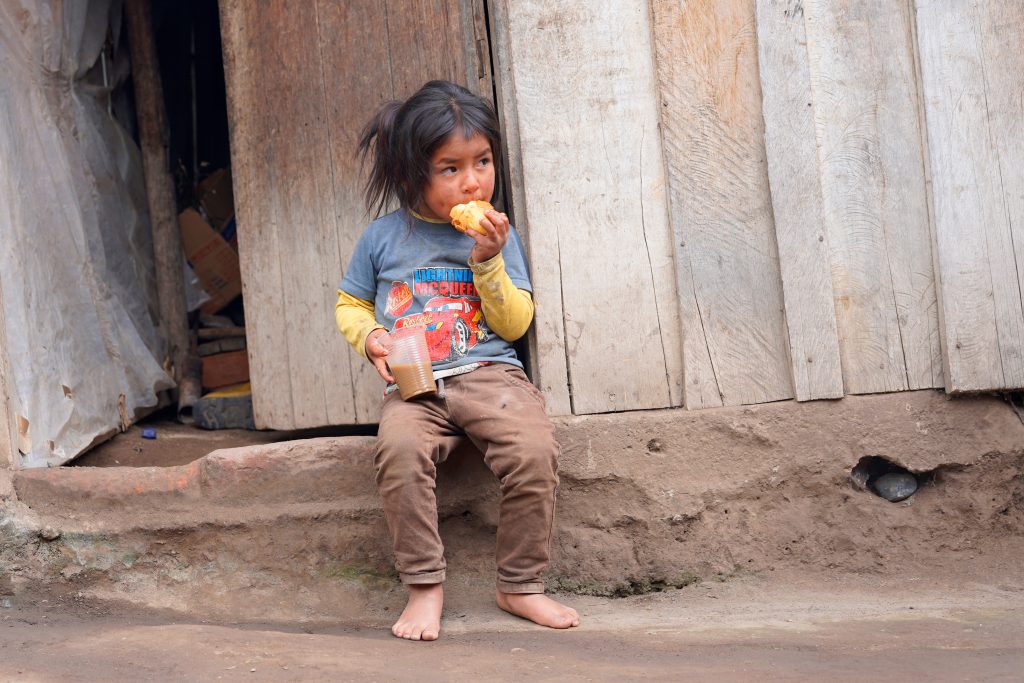
Chronic child malnutrition is a prevalent issue in Ecuador. In 2020, of children between the ages of 0 – 4 years old, 23% had moderate to severely stunted growth and 10% were overweight. For school-aged children between the ages of five to nineteen, in 2016, 1% were thin/severely thin and 28% were overweight (UNICEF, 2021). In 2019, the under-five child mortality rate was 14% per 1,000 live births, 4,696 under-five deaths and 2,379 neonatal deaths (occurring within the first 28 days of life). For children between the ages of five to fourteen, there were 1,038 deaths in 2019 (UNICEF, 2021).
Right to clean water and sanitation
In 2009, prior to the National Water Plan, the country’s policy on water and sanitation was embodied by a joint Plan implemented by the International Labour Organization, WHO, UN Habitat, UNDP, the Pan American Health Organization (PAHO) and the UN volunteer programme. Nationally, the Plan was supported by Ministerio de Desarrollo Urbano y Vivienda (Ministry of Urban Development and Housing), Secretaría Nacional del Agua (National Secretariat of Water) and Ministerio de Salud Pública (Ministry of Public Health). Since the implementation of the National Water Plan, there has been significant improvement in acquiring access to clean drinking water and sanitation services in Ecuador (SDG Fund, 2017).
In 2020, 95% of the population had access to drinking water within households. In urban areas, within households, 100% of the population had access to drinking water and in rural areas, 87% did. Similarly, in 2020, 92% of the population had access to basic sanitation services, 93% in urban areas and 89% in rural areas. In 2019, 87% of schools were able to provide basic drinking water services and 80% were able to provide basic sanitation services (UNICEF, 2021).
Right to identity
Ecuador’s Code of Childhood and Adolescence mandates the state to protect children’s right to identity via the country’s civil registry service (Code of Childhood and Adolescence, 2003). Through this system, all children born in the country have the right to be immediately registered following their birth. This process must be free and accessible to all Ecuadorian children.
Despite these obligations, the country struggles to adequately support children to access ‘late birth registration’ services or have lost identity documents replaced. Ecuador has no functioning system that enables children to retroactively register their birth and all lost documents require a fee to be replaced. This is an obstacle that inevitably prevents children from accessing these documents without support.
Risk factors → Country-specific challenges
Child trafficking
Ecuadorian children are subjected to commercial sexual exploitation and trafficking. Refugee and migrant children, specifically those of Colombian, Venezuelan and Peruvian descent as well as Indigenous and Afro-Ecuadorian children are at a heightened risk of child prostitution and sex trafficking. Criminal gangs operating in Ecuador recruit children from schools and use social media platforms to engage in sexual exploitation, drug trafficking and robbery (US Department of Labour, 2020). Between 2017 and 2018, Ecuadorian authorities rescued 287 victims of trafficking, mostly from forced labour and sexual exploitation (UNODC, 2019).
Sexual exploitation
School-related sexual violence has been a longstanding issue in Ecuador, and since 2014, cases have been on the rise. Sexual violence was being perpetrated on children from preschool through to primary and secondary school by janitors, bus drivers, school staff and teachers. This had been taking place in both public and private schools for children of all ages, including those with disabilities.
Government data reveals that between 2014 and 2020, there were 4,221 reported cases of school-related sexual violence in Ecuador. Reported cases involved rape, sexual (online) abuse, harassment, bullying and forcing children to perform sexual acts on school premises or outside school grounds (Human Rights Watch, 2020).
In 2017, after a public outcry from families affected by school-related sexual violence, the National Assembly opened a formal investigation, under the Academia Aeronáutica Mayor Pedro Traversari (AAMPETRA) Commission. Following this, under President Moreno in 2017, the government adopted a binding protocol requiring teachers, school counsellors and staff to report all sexual violence allegations within 24 hours and created a database to track reported cases, investigations and prosecutions (Human Rights Watch, 2020).
In 2020, The Inter-American Court of Human Rights heard the court’s first-ever school-related sexual violence claim, Paola Guzmán v Ecuador. This case involved a 14-year-old student who was raped for over a year and despite complaints to the school, failed to receive protection. Sadly, this young student took her life.
The Court held Ecuador responsible for her right to life to study free from sexual violence and bodily autonomy, as well as her family’s right to a fair trial and respect for their psychological integrity. Key measures were ordered by the Court to ensure that the educational system in Ecuador tackles and prevents the widespread and prevalent issue of school-related sexual violence (Human Rights Watch, 2020).
Gender-based violence
Gender-based violence is also a widespread issue in Ecuador that predominantly affects women and girls from Indigenous, Afro-Ecuadorian and Montubian communities. Approximately, 6 out of 10 (68%) women in Ecuador have experienced some type of violence.
Since the outbreak of the COVID-19 pandemic, cases of gender-based violence have been on the rise, which has led to the development of the Territorial Economic Empowerment for the Indigenous, Afro-Ecuadorians, and Montubian Peoples and Nationalities (TEEIPAM) project funded by the World Bank and expected to be implemented in 2022 (Orozco Buitrago, et.al, 2021).
Research conducted by TEEIPAM and Comité Central de Mujeres (Women Central Committee), found that gender and social norms in Ecuador set the premise for men to believe that women were their property and that they held power over them. Ecuador has a patriarchal society, where traditionally set gender roles are ingrained in boys and girls from a very young age. Women and girls have limited access to work and to public services such as education and health care (Orozco Buitrago, et.al, 2021).
Child labour
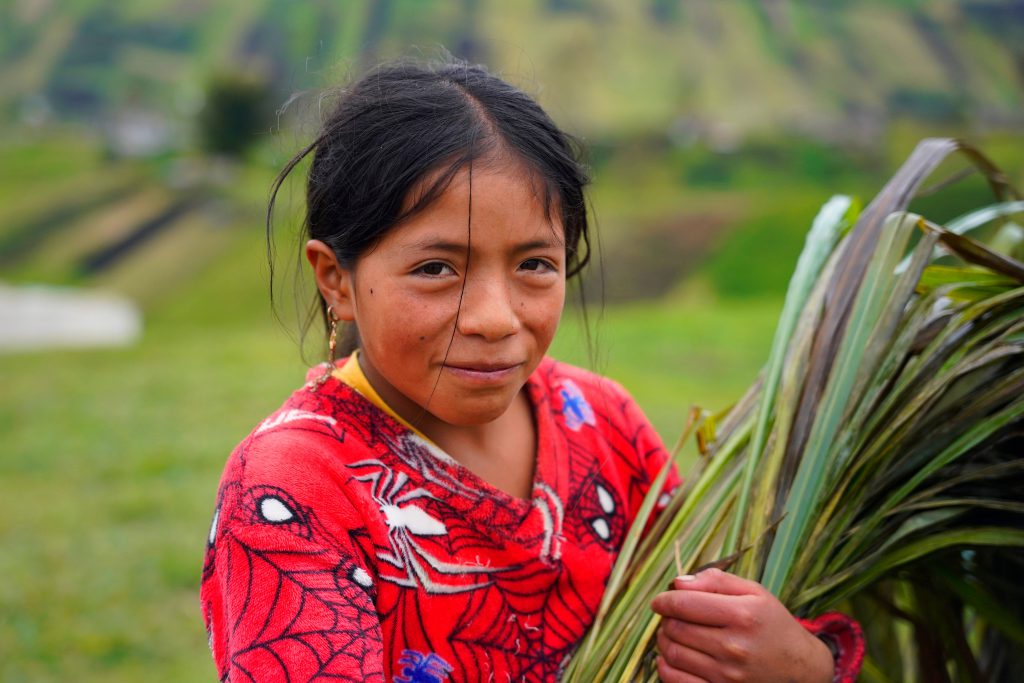
Ecuador has ratified all the key international conventions concerning child labour such as the International Labour Organization (ILO) Minimum Age Convention, 1973 (No. 138); Worst Forms of Child Labour Convention, 1999 (No. 182) and Palermo Protocol on Trafficking in Persons. Despite these ratifications, children in Ecuador are subjected to the worst forms of child labour within the agriculture, industry and services sectors. Children between the ages of 5 and 14 make up 82% of the agriculture sector, 3% of the industry sector which includes mining and the production of bricks, and 15% of in the services sector which includes domestic work, begging, vending, shoe shining, street work and selling newspapers (US Department of Labour, 2020).
Government reports indicate that Peruvian children are being recruited under false promises of work in illegal mines in Ecuador. Children between the ages of 6 and 10 from Indigenous communities also fall victim to of being recruited for work under false promises and are often taken to Guayaquil and Quito. Refugee and migrant children from Colombia and Venezuela are particularly vulnerable to exploitative labour such as street work and forced begging. These children are also vulnerable to exploitative labour within the fishing sector across the Ecuadorian coastal region and artisanal mining in the northern and southern regions of Ecuador (US Department of Labour, 2020).
Adolescent pregnancy
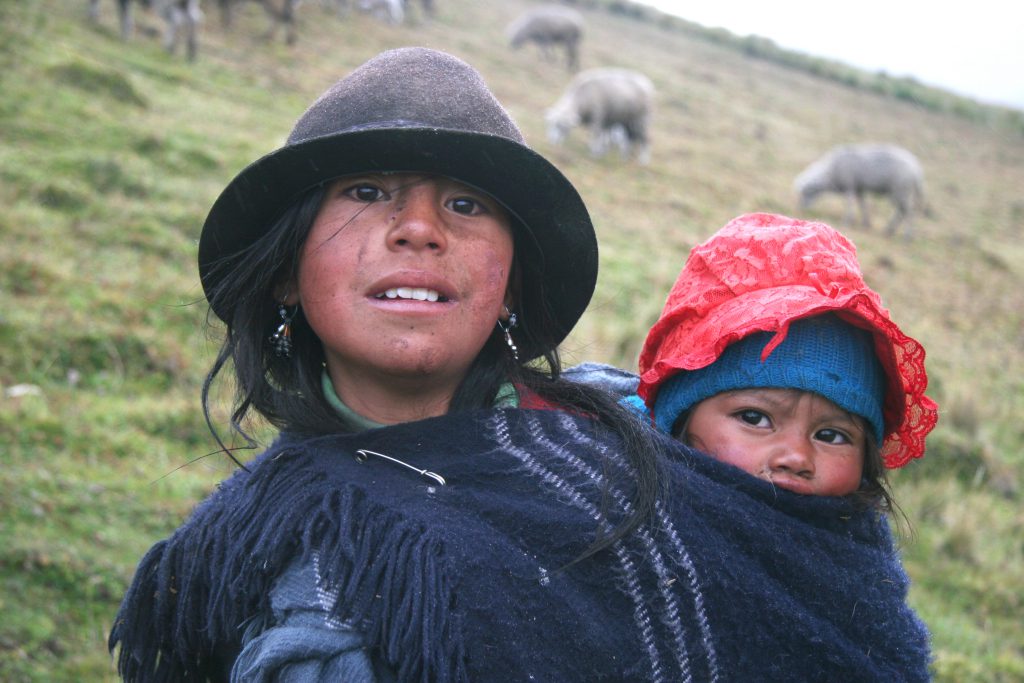
Ecuador has the third highest rate of adolescent pregnancy in the South American region. Between 2015 and 2020, for girls between the ages of 15 and 19, the adolescent birth rate in Ecuador was 64% (UNICEF, 2021). Statistics published by Ecuador’s National Institute of Statistics and Census (INEC) revealed that 49.3 of every 100 live births correspond to adolescent mothers. Over the last decade, there has been a 78% increase in births among girls between the ages of 10 -14 years old and an 11% increase in girls between the ages of 15 and 19 years old (Mosquera Benalcazar, 2019).
Across the Chimborazo, Cotopaxi and Imbabura highlands, adolescent pregnancy rates are high, and this is attributed to poverty, low education enrolment, gender inequality and cultural norms. Adolescent girls living in the highlands are less likely to have access to sexual and reproductive health services.
Despite girls knowing of contraceptive methods, not many use them. The increasing adolescent pregnancy rates in Ecuador are attributed to sexual abuse and sexual violence. In the national survey conducted by INEC, it is estimated that 61% of women have experienced some type of physical, psychological or sexual violence (Mosquera Benalcazar, 2019).
Written by Vanessa Cezarita Cordeiro
Internally proofread by Aditi Partha
Last updated on 17 April 2022
References:
Vélez, H.P. (2021, November 15). “Ecuador.” Retrieved from Britannica, accessed 11 April 2022.
[1] This article by no means purports to give a full or representative account of children’s rights in Ecuador; indeed, one of the many challenges is the scant updated information on Ecuadorian children, much of which is unreliable, not representative, outdated or simply non-existent.

